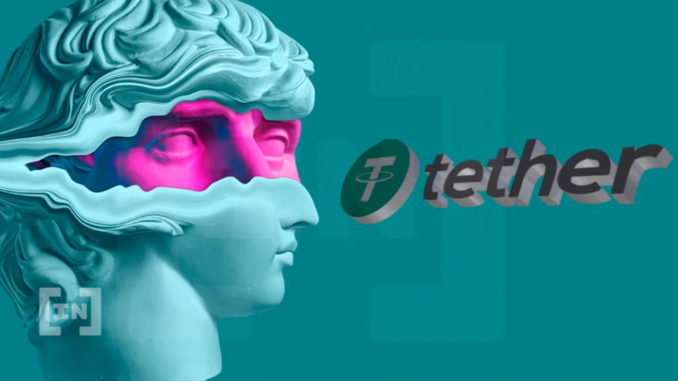
Tether launches USDT on NEAR blockchain as Kujira launches new soft-pegged stablecoin USK.
According to Tether CTO Paolo Ardoino, Tether will help NEAR thrive. NEAR is a layer one smart contract blockchain that runs roughly 700 decentralized applications and processes 300,000 to 400,000 transactions per day, according to the NEAR foundation.
The CEO of the NEAR foundation said that the community looks forward to seeing what role Tether will play in the future of finance.
NEAR will become the fourteenth blockchain to adopt USDT, after the likes of Ethereum, Algorand, Solana, and Tezos.
Tether rival USDC lives on Ethereum, Solana, Avalanche, TRON, Algorand, Stellar, Flow, and Hedera.
Kujira, anyone?
The native NEAR coin started the year with a bang, rallying to over $20 in mid-Jan 2022. The coin took a beating during the extended crypto market downturn that began with the collapse of the TerraUSD stablecoin and is now trading at $4.96, data from Coingecko shows.
Speaking of TerraUSD, the Kujira Project today announced the launch of its new USK stablecoin on the Cosmos ecosystem after migration from the Terra blockchain. USK is a decentralized stablecoin in the mold of DAI, a soft-pegged stablecoin in the MakerDAO ecosystem. In keeping with the similar spirit of censorship resistance, the community behind the project resisted 50% USDC backing. USK will instead be backed by a reserve of crypto assets, including Cosmos’s native token ATOM, with KUJI to follow soon. It will also use specific trading techniques resembling the algorithmic mechanism that backed TerraUSD to help maintain its peg but has in place measures to ensure solvency. New USK is minted or loaned by depositing ATOM in a smart contract. The loan’s loan-to-value ratio must be 60%. USK is burnt when the loan is paid off, and the ATOM is returned.
The push towards decentralized stablecoins
The centralized vs. decentralized stablecoin debate recently came into sharp focus when the U.S. Office of Foreign Assets Control sanctioned Tornado Cash, a cryptocurrency mixer, together with 44 crypto addresses, in Aug. 2022. The sanctions drew attention to how much exposure the cryptocurrency industry has to centralized resources that could be subject to government censure.
Tether’s and Kujira’s stablecoins lie on opposite ends of the centralization spectrum with regard to censure. Tether issues USDT and maintains its peg through traditional financial instruments like Treasury bills and, to a lesser degree, commercial paper. Kujira relies solely on crypto assets and algorithms. Of the two, Tether could be subject to greater censure by law enforcement.
Crypto data aggregator Dune Analytics indicated that Circle, the issuer of USDC, had made it impossible to move USDC to and from the 44 OFAC-sanctioned addresses. The move drew harsh criticism from privacy advocates, who advocate “full-stack” decentralization that would include both decentralized smart contracts and stablecoins.
To maintain the privacy of the DAI stablecoin, one radical proposal by MakerDAO co-founder Rune Christensen suggests free-floating the DAI stablecoin by limiting its exposure to risk-weighted assets and hence its exposure to centralized resources. However, he added, the process could take at least three years, barring any immediate authoritarian actions.
For Be[In]Crypto’s latest Bitcoin (BTC) analysis, click here.
Disclaimer
All the information contained on our website is published in good faith and for general information purposes only. Any action the reader takes upon the information found on our website is strictly at their own risk.






Be the first to comment